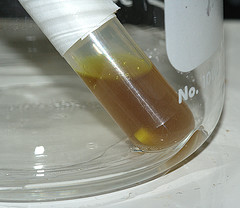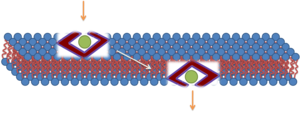In continuation with my previous posts here and in skin deep, let me add few more things I found recently.
| Peptide Synthesis Deprotection (Photo credit: Beige Alert) |
The article titled “Systematic Discovery of New Recognition Peptides Mediating Protein Interaction Networks “ published recently in PLOS Biology ( full text at : http://dx.plos.org/10.1371/journal.pbio.0030405 ) describes the signalling by short peptide segments. Short peptide segments interact with globular protein domains that share a common sequence pattern (e.g., SH3 binding to PxxP). They also point out that sequence comparison experiments are unlikely to discover the optimum short motif. They recommend using data from genome-scale interaction studies. So the methodology adopted by the designers of peptide-21 may not be robust.
OK, now I am going to do something here that I rarely ever do on my blogs: I am going to shamelessly self promote me without actually giving away much information. My plan is to get noticed by the cosmetic tycoons and make some money out of this incessant babbling about beauty peptides 🙂
| English: Example of mechanism of direct penetrating peptide (Photo credit: Wikipedia) |
I used a newly published algorithm (not mine) for bioinformatics analysis and found some interesting information.
The most commonly occurring tetra peptide in collagen is in fact GXXG and PXXP the commonest being GPPG.
The commonest tetra peptide repeats were GERG, GEKG, GFPG, GENG, GPRG, GHRG.
This is what terapeptide-21 is based on and there is nothing new till here.
But here comes the most surprising part!
The highest scoring short peptide of probable biological (signal) function does not belong to the above list!!
Hey, Do I hear my phone ringing?????

- Bringing Generative AI Into the EHR: Why DHTI Matter (Part I) - January 7, 2026
- Pragmatic Research That Builds and Travels - December 9, 2025
- Are we trapped in a matrix? - November 18, 2025






